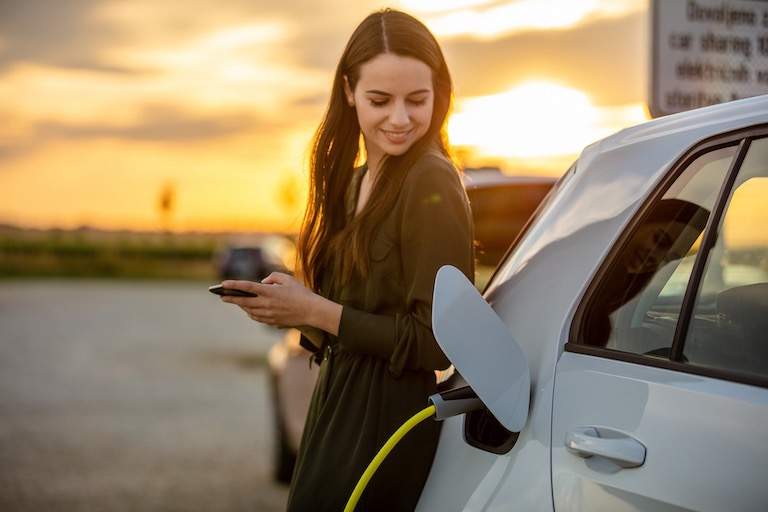
How to take care of your electric car’s battery
The way you drive and charge your EV can have a big influence on battery performance and lifespanOne of the biggest sticking points holding back a wider acceptance for electric cars is the perception that the battery will die and render the vehicle useless.
It is true that lithium-ion batteries degrade over a long period of time, but the reality is that’s no different to a traditional internal combustion engine which can lose performance as a result of general wear and tear.
In much the same way as forgetting to change the oil will accelerate the likelihood of damaging an engine, you can just as easily abuse a battery with some bad habits.
So, just as car-makers set servicing guidelines to prolong the life and efficiency of an engine, there are ways to care for your EV’s battery that will ensure the vehicle operates properly and efficiently over an extended period of time.
Before we get to that, let’s explain why batteries naturally lose some degree of performance.

Okay, for starters, electric vehicle batteries are not just one big battery; the pack is made up of a large number of individual cells that are linked together. Each of those cells has a lithium nickel manganese cobalt oxide (NMC) cathode, a graphite anode and a complex cocktail of chemicals that allows them to store – as well as deploy and retrieve – electricity.
According to research conducted by the US Department of Energy at Stanford University, battery degradation is a result of the NMC particles breaking away from the carbon structure that is binding them together depending on the severity of discharge/charge cycle as well as static and operating battery temperatures.
It found that lithium-ion batteries, in a worst-case scenario, can lose up to 23 per cent of their useable capacity when users replenish electricity via rapid charging between a static charge of 25-100 per cent – essentially like filling a petrol tank when it has just a quarter left.
This result was achieved after almost 4500 cycles with the battery at a constant temperature of 20 degrees Celsius.

When you consider that most of today’s electric cars offer around 400km of driving range on a full battery (and therefore 300km over 75 per cent), that would equate to 1.3m kilometres of driving before the battery degraded below 80 per cent, which is more than you’d get out of a petrol engine.
The Stanford research found batteries degrade significantly less – down to 90 per cent capacity over 8500 cycles – when discharged to 10 per cent, refilled to 75 per cent and only occasionally using rapid charging.
With all that in mind, here’s some handy hints and recharging habits to take care of your battery for the long haul.
Consider your weekly driving habits
Look at how far you actually drive each day and replenish the battery to give you the amount of range you require (with a small buffer for any detours or unplanned excursions). That way the battery will remain in its sweet spot.
Use almost all of the battery

The notion of range anxiety – a fear of running out of battery power – probably means that most EV owners will recharge the battery as much as possible almost every day. But that’s not the best solution to prolong the life of the battery.
Instead, as the Stanford research found, it is best to deplete the battery down to 10 per cent before recharging, therefore reducing the number of charge cycles it goes through.
Charge at home or the office
It makes it easier to stick to the above regime when you have the option to refuel at home, or the office, with an electric car. And that’s the best way for the battery to be topped up too, as slow charging has less impact on the battery pack.
Set the vehicle to only recharge to 80 per cent capacity
Simply leaving the electric vehicle plugged in will ensure the battery becomes fully charged. But, as we’ve outlined, that isn’t always necessary and isn’t good for the long-term health of the battery.

Most electric vehicles offer a variety of ways to customise the recharging time and process, so find out how to limit the battery to 80 per cent of its capacity and you’ll improve its longevity.
Don’t leave the battery fully charged
If you do charge the battery to its maximum capacity, don’t leave the vehicle locked away in the garage for days like that as it causes excessive heat that leads to accelerated degradation.
Use rapid charging only when needed
Similarly, high-voltage rapid charging pushes a load of electrons into the battery over a short period of time, which in turns generates massive heat.
Cool down after enthusiastic driving
No matter how or where you recharge, the power and performance offered by an electric car can be intoxicating and addictive.
But, just as you should when driving a modern petrol-powered car in a spirited manner, make sure you cruise for a while and cool down the battery pack after an enthusiastic drive in an EV.
Related: Electric car reviews on carsales
Related: Electric car news on carsales
Related: Electric car advice on carsales


Please see our Editorial Guidelines & Code of Ethics (including for more information about sponsored content and paid events). The information published on this website is of a general nature only and doesn’t consider your particular circumstances or needs.














